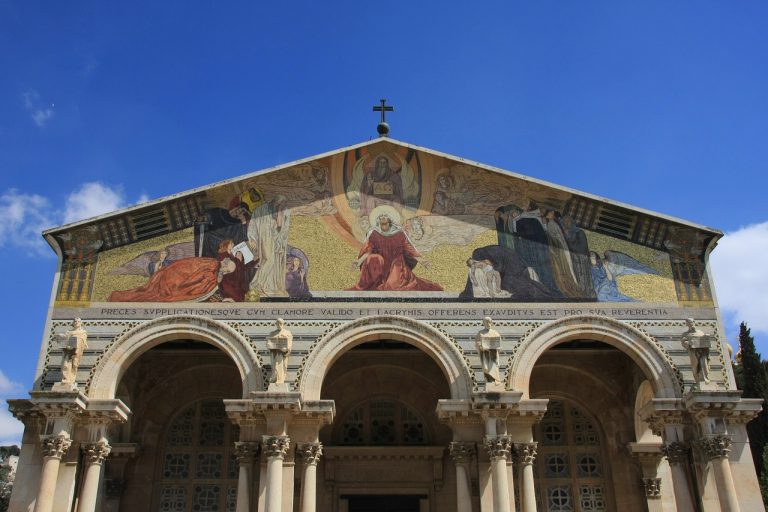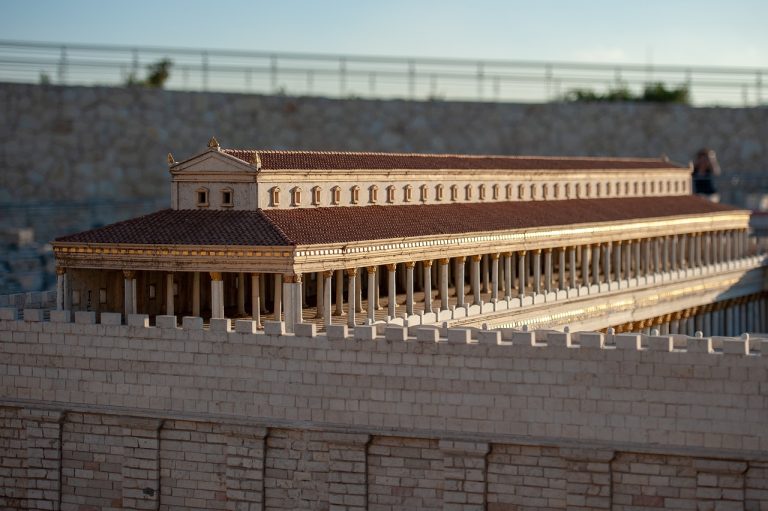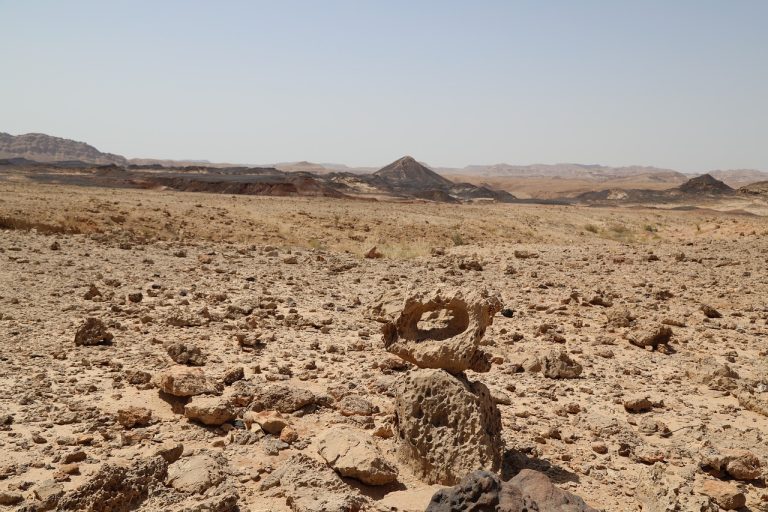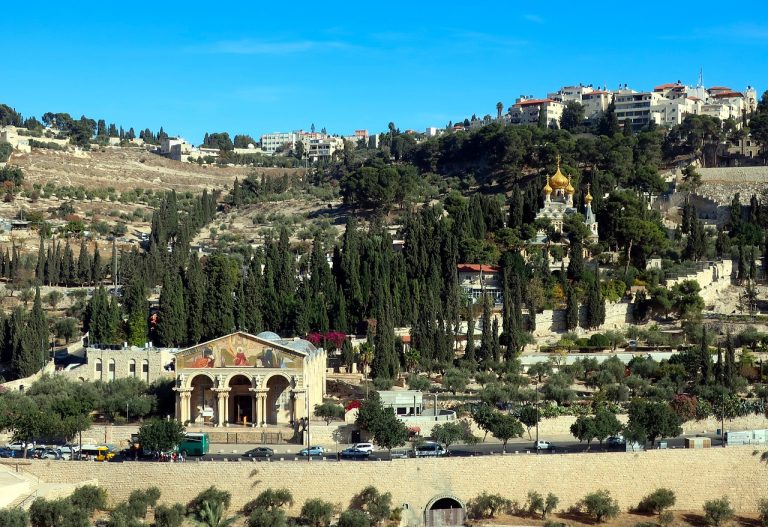Jerusalem Israel Video
The Western Wall
The Western Wall, also known as the Wailing Wall, is one of the most significant religious sites in Judaism. Located in the Old City of Jerusalem, it is the last remaining part of the Second Temple complex that was destroyed by the Romans in 70 CE. The Western Wall serves as a place of prayer and pilgrimage, with thousands of people visiting each day. Some key features and facts about the Western Wall include:
- Historical Significance: The Western Wall is believed to be the closest accessible site to the Holy of Holies, the most sacred place in the Jewish faith.
- Architectural Features: The Wall is made of large limestone blocks and measures approximately 488 meters in length. It reaches a height of about 19 meters, with about one-third of its height visible above ground.
- Pilgrimage Destination: Jews from around the world visit the Western Wall to pray, place written prayers in the wall’s crevices, and celebrate special occasions such as Bar Mitzvahs.
- Symbolic Importance: The Wall represents the longing and connection of the Jewish people to Jerusalem and their historical roots. It is a symbol of resilience and hope.
Keywords: Western Wall, Wailing Wall, Second Temple, Judaism, Old City, prayer, pilgrimage
Image 1:
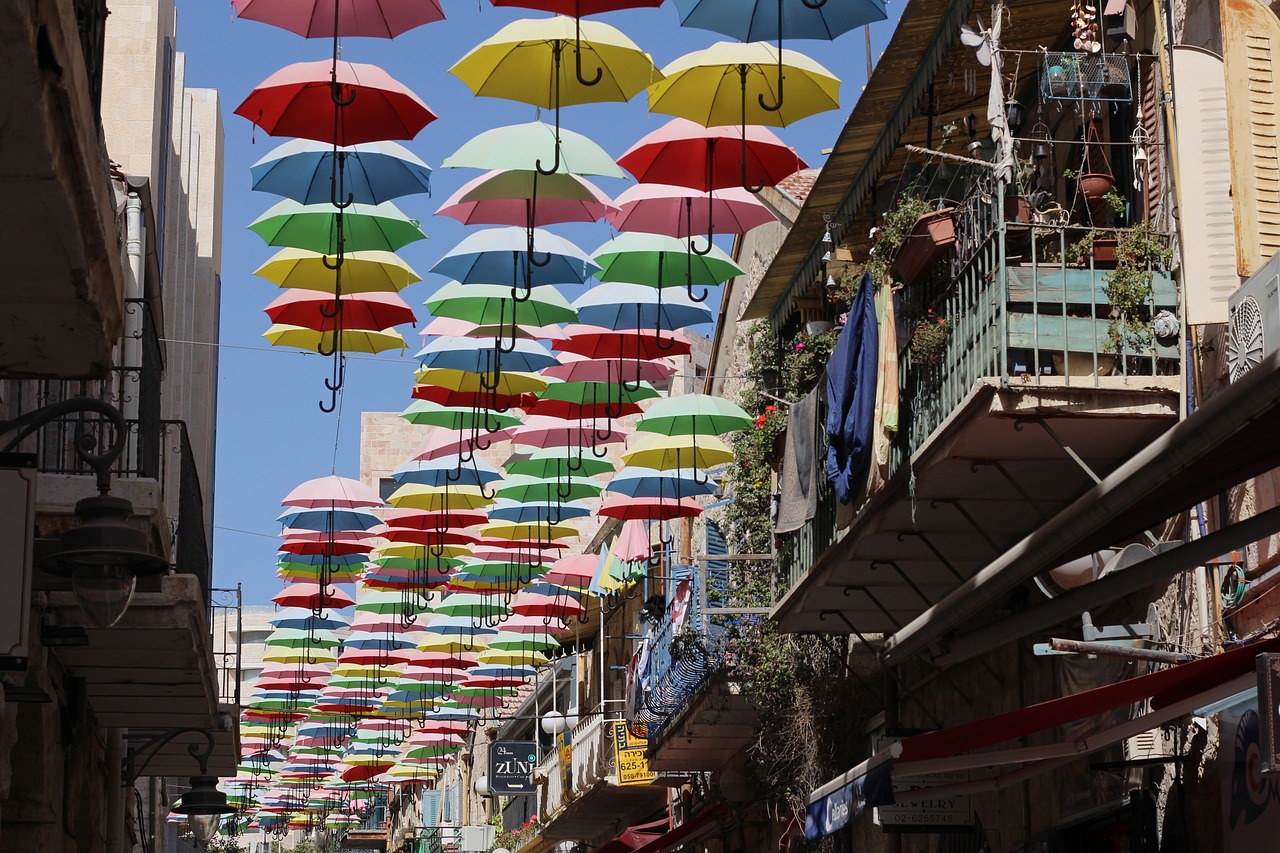
The Dome of the Rock
The Dome of the Rock is an iconic Islamic shrine located on the Temple Mount in Jerusalem. It is considered one of the most recognizable landmarks in the city and holds great religious and historical significance. Key facts and features of the Dome of the Rock include:
- Architectural Marvel: The Dome of the Rock is renowned for its stunning architecture, featuring a large golden dome, intricate tilework, and beautiful calligraphy.
- Religious Significance: The shrine is believed to mark the spot where Prophet Muhammad ascended to heaven, making it a sacred site for Muslims.
- Historical Background: Constructed in the 7th century, the Dome of the Rock has witnessed various renovations and restorations over the centuries.
- Open Courtyard: The shrine is surrounded by an open courtyard, offering visitors breathtaking views of the Old City and its surroundings.
Keywords: Dome of the Rock, Islamic shrine, Temple Mount, Jerusalem, architecture, religious significance
Image 2:

The Church of the Holy Sepulchre
The Church of the Holy Sepulchre is a significant Christian pilgrimage site in Jerusalem. It is believed to be the place where Jesus Christ was crucified, buried, and resurrected. The church’s rich history and religious importance make it a must-visit attraction. Here are some notable details about the Church of the Holy Sepulchre:
- Historical Significance: The church is built on the site identified as Golgotha, the hill where Jesus was crucified, and the tomb where he was buried.
- Architectural Marvels: The church showcases a blend of architectural styles, including Romanesque, Gothic, Byzantine, and Crusader influences.
- Religious Artifacts: Inside the church, visitors can see various holy relics, including the Stone of Anointing and the Aedicule, which houses the tomb of Jesus.
- Pilgrimage Destination: Christians from all over the world visit the Church of the Holy Sepulchre to pay their respects, attend religious services, and experience the profound spiritual atmosphere.
Keywords: Church of the Holy Sepulchre, Christian pilgrimage, Jesus Christ, Golgotha, religious artifacts
The Tower of David
The Tower of David, also known as the Jerusalem Citadel, is an ancient fortress located near the Jaffa Gate in the Old City of Jerusalem. It has witnessed centuries of history and now serves as a museum that showcases the city’s rich past. Here are some key details about the Tower of David:
- Historical Significance: The tower dates back to the 2nd century BCE and has been a strategic military site throughout history, witnessing numerous battles and conquests.
- Museum and Exhibitions: The Tower of David Museum offers visitors an immersive experience, with exhibits that explore Jerusalem’s history, archaeology, and culture.
- Panoramic Views: From the tower’s rooftop, visitors can enjoy breathtaking panoramic views of Jerusalem’s Old City, including its iconic landmarks.
- Night Spectacular: The Tower of David hosts a renowned sound and light show called the “Night Spectacular,” which uses advanced technologies to bring the history of Jerusalem to life.
Keywords: Tower of David, Jerusalem Citadel, ancient fortress, museum, history, exhibitions
The Israel Museum
The Israel Museum is the largest cultural institution in Israel and one of the world’s leading art and archaeology museums. It is located in Jerusalem and houses a vast collection of artifacts and artworks from various periods. Here are some highlights of the Israel Museum:
- Art and Archaeology: The museum’s collection includes thousands of pieces, ranging from ancient archaeological finds to contemporary artworks.
- Shrine of the Book: The museum is home to the famous Shrine of the Book, which houses the Dead Sea Scrolls, one of the most significant archaeological discoveries of the 20th century.
- Model of Jerusalem: Visitors can explore a large-scale model of Jerusalem during the Second Temple period, providing a unique understanding of the city’s historical layout.
- Wing for Fine Arts: The museum’s fine arts wing features an extensive collection of European and modern art, including works by renowned artists such as Monet, Picasso, and Chagall.
Keywords: Israel Museum, art, archaeology, Shrine of the Book, Dead Sea Scrolls, Jerusalem model
Image 3:

The Yad Vashem Holocaust Memorial
The Yad Vashem Holocaust Memorial is dedicated to honoring the memory of the six million Jews who perished during the Holocaust. Located on the western slope of Mount Herzl in Jerusalem, it serves as a place of remembrance, education, and research. Here are some key aspects of the Yad Vashem Memorial:
- Commemoration and Remembrance: The memorial features various monuments, sculptures, and memorials that pay tribute to the victims of the Holocaust, including the Hall of Names and the Children’s Memorial.
- Historical Documentation: Yad Vashem houses one of the world’s largest archives of Holocaust-related documents, testimonies, and artifacts, providing a vital resource for research and education.
- Education and Research Center: The memorial offers educational programs, exhibitions, and seminars to promote Holocaust education and combat anti-Semitism.
- The Righteous Among the Nations: Yad Vashem honors non-Jews who risked their lives to save Jews during the Holocaust through the “Righteous Among the Nations” program.
Keywords: Yad Vashem Holocaust Memorial, remembrance, education, research, Hall of Names, Righteous Among the Nations
The Mahane Yehuda Market
The Mahane Yehuda Market, commonly known as “The Shuk,” is a vibrant and bustling market in Jerusalem. It offers a unique sensory experience, with a variety of fresh produce, spices, baked goods, and more. Here’s what you can expect when visiting the Mahane Yehuda Market:
- Culinary Delights: The market is a food lover’s paradise, with a wide array of stalls and shops selling fresh fruits, vegetables, spices, baked goods, cheeses, and traditional Middle Eastern cuisine.
- Local Vendors and Atmosphere: The market is filled with local vendors who create a lively and vibrant atmosphere, engaging visitors with their colorful displays and friendly interactions.
- Nightlife and Entertainment: In recent years, the market has transformed into a hub for nightlife, with trendy bars, restaurants, and live music venues attracting locals and tourists alike.
- Cultural Experience: Exploring the market provides an opportunity to immerse oneself in the local culture, taste traditional dishes, and witness the daily life of Jerusalemites.
Keywords: Mahane Yehuda Market, The Shuk, fresh produce, spices, culinary delights, nightlife
The Mount of Olives
The Mount of Olives is a significant religious and historical site located east of the Old City of Jerusalem. It holds great importance in Judaism, Christianity, and Islam and offers breathtaking views of the city. Here are some notable aspects of the Mount of Olives:
- Religious Significance: The mount is mentioned numerous times in religious texts and is associated with significant events, including Jesus’ ascension to heaven and the resurrection of the dead in Jewish tradition.
- Cemetery and Tombs: The Mount of Olives is home to the oldest continuously used Jewish cemetery in the world, with thousands of graves and notable tombs, including those of biblical figures.
- Panoramic Views: From the mount’s summit, visitors can enjoy panoramic views of the Old City, including iconic landmarks such as the Dome of the Rock and the Church of the Holy Sepulchre.
- Religious Practices: The mount is a site of prayer and pilgrimage for believers of various faiths, with numerous churches, synagogues, and mosques dotting its slopes.
Keywords: Mount of Olives, religious significance, cemetery, tombs, panoramic views
The Garden Tomb
The Garden Tomb is an alternative site believed by some Christians to be the burial and resurrection place of Jesus Christ. Located just outside the Old City walls, it offers a serene and peaceful environment for prayer and reflection. Here’s what you need to know about the Garden Tomb:
- Religious Beliefs: Many Christians believe that the Garden Tomb matches the biblical description of Jesus’ burial place and resurrection site.
- Garden Setting: The tomb is situated within beautifully landscaped gardens, providing visitors with a tranquil and contemplative atmosphere.
- Crucifixion Site: The Garden Tomb is located near a rocky outcrop known as Golgotha, which some believe to be the site of Jesus’ crucifixion.
- Visiting Experience: Visitors can explore the tomb, participate in guided tours, and engage in personal prayer and reflection within the peaceful surroundings.
Keywords: Garden Tomb, Christian belief, burial place, resurrection, garden setting
Conclusion
Jerusalem, Israel, is home to a wealth of architectural wonders that reflect its rich history and religious significance. From the Western Wall to the Dome of the Rock, the city’s iconic buildings offer visitors a glimpse into its diverse cultural and spiritual heritage. The Israel Museum and Yad Vashem Memorial provide opportunities for education and reflection, while the Mahane Yehuda Market and Mount of Olives offer vibrant experiences and breathtaking views. Whether exploring the ancient sites or indulging in the city’s culinary delights, Jerusalem’s architectural wonders captivate and inspire.
References
- westernwall.org
- domeoftherock.org
- churchoftheholysepulchre.com
- towerofdavid.org.il
- israelmuseum.org.il
- yadvashem.org
- mahane-yehuda.co.il
- mountofolives.co.il
- gardentomb.com


